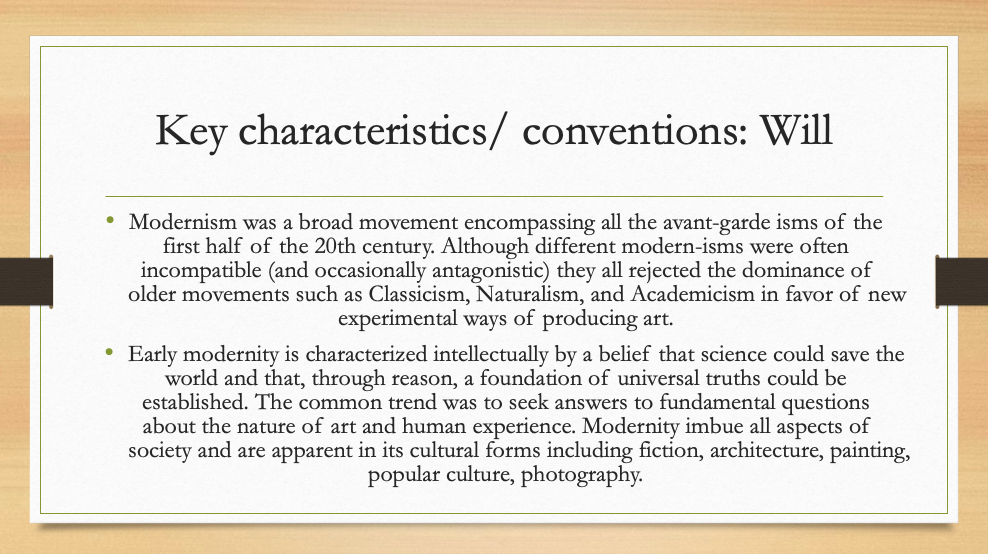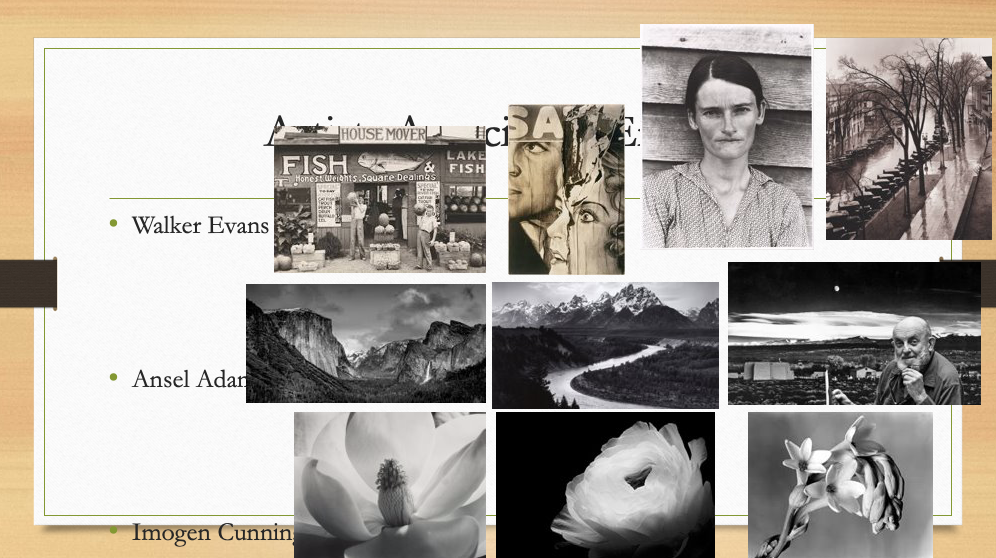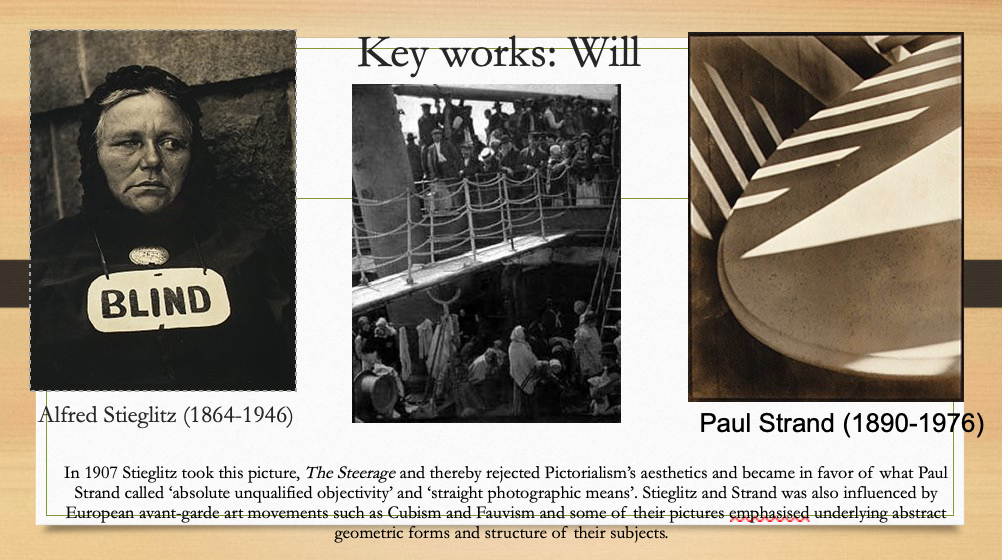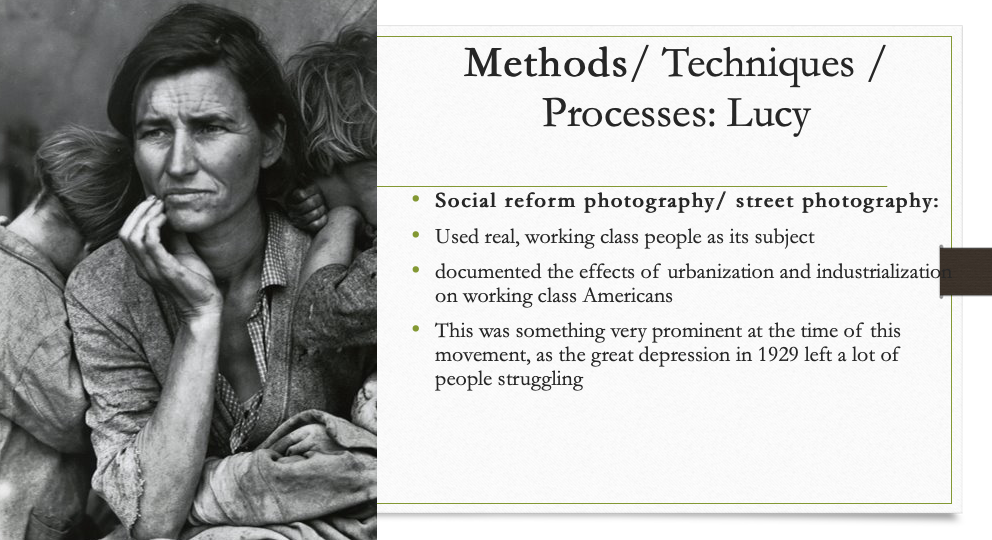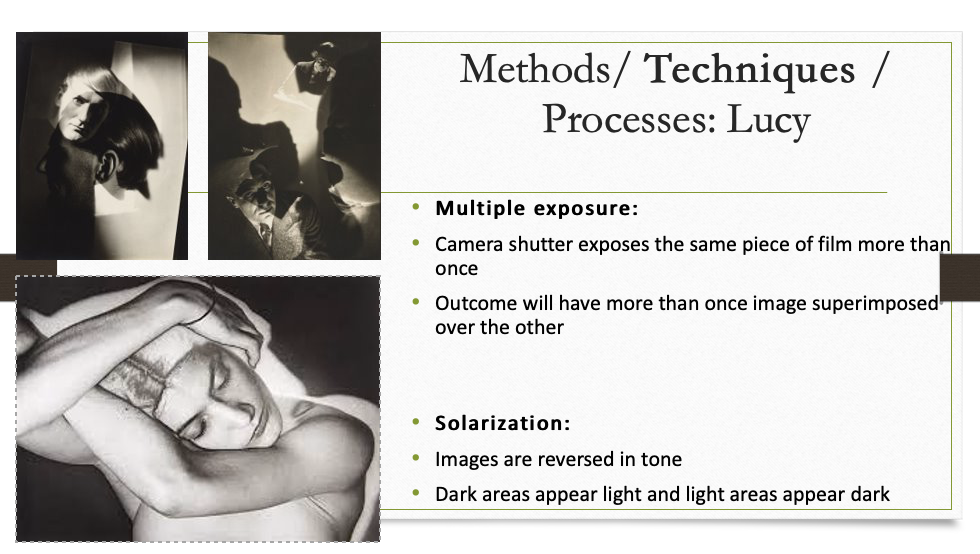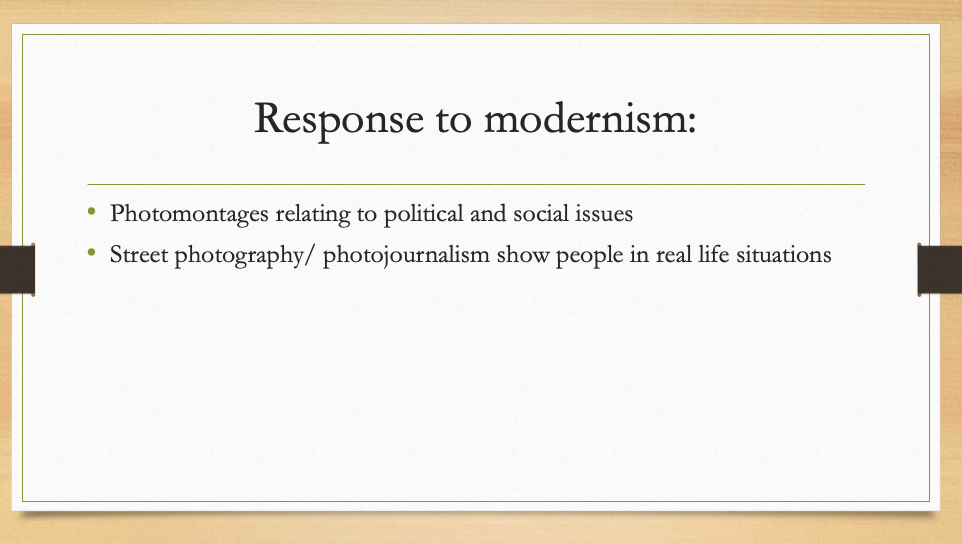PICTORIALISM
Time period: 1880s – 1920s
Key characteristics/ conventions: From the 1880s and onwards photographers strived for photography to be art by trying to make pictures that resembled paintings. A lot of nude photography and nature was present.
Artists associated: Julia Margaret Cameron (1815-1879), Peter Henry Emerson (1856-1936), The Vienna Camera Club (Austria), The Brotherhood of the Linked Ring (London), Photo-Secession (New York) founded by Alfred Stieglitz.
Key works: H P ROBINSON – HE NEVER TOLD HIS LOVE (1884), ALFRED HORLSEY HINTON – FLEETING AND FAR (1903), GEORGE DAVISON – REFLECTIONS (1899). Alfred Stieglitz: Equivalent (cloud studies).
Methods/ techniques/ processes: Using Vaseline to blur the lens. Scratch the images/ use chemicals to alter the colors etc. Manipulating images in the darkroom, scratching and marking their prints to imitate the texture of canvas, using soft focus are among other techniques.
REALISM / STRAIGHT PHOTOGRAPHY
Time period:
Key characteristics/ conventions:
- REALISM – Photography grew up with claims of having a special relationship to reality, and its premise, that the camera’s ability to record objectively the actual world as it appears in front of the lens was unquestioned. This supposed veracity of the photographic image has been challenged by critics as the photographer’s subjectivity (how he or she sees the world and chooses to photograph it) and the implosion of digital technology challenges this notion opening up many new possibilities for both interpretation and manipulation. A belief in the trustworthiness of the photograph is also fostered by the news media who rely on photographs to show the truth of what took place.
- STRAIGHT PHOTOGRAPHY – Were photographers who believed in the intrinsic qualities of the photographic medium and its ability to provide accurate and descriptive records of the visual world. These photographers strove to make pictures that were ‘photographic’ rather than ‘painterly’, they did not want to treat photography as a kind of monochrome painting.
- SOCIAL REFORM PHOTOGRAPHY – The rural poor or the urban environment were not subjects for Pictorial photographers. But when A Danish immigrant , Jacob Riis published his book, How the Other Half Lives’ about the slums of Manhattan a new kind of realism was born with a socialist dimension. A number of photographer’s such as Lewis W Hine and Dorothea Lange began to document the effects of industrialization and urbanization on working-class Americans. Their work brought the need for housing and labour reform to the attention of legislators and the public and became the origins of what we now call photojournalism.
Artists associated:
Walker Evans (1903-75). Often considered to the leading American documentary photographer of the 20th century. He rejected Pictorialism and wanted to establish a new photographic art based on a detached and disinterested look. He most celebrated work is his pictures of three Sharecropper families in the American South during the 1930s Depression.
Key works: Walker Evans, Hale Country (1936),
Methods/ techniques/ processes:
Cubism and Fauvism, Abstract geometric forms and structure of subjects.
MODERNISM:

